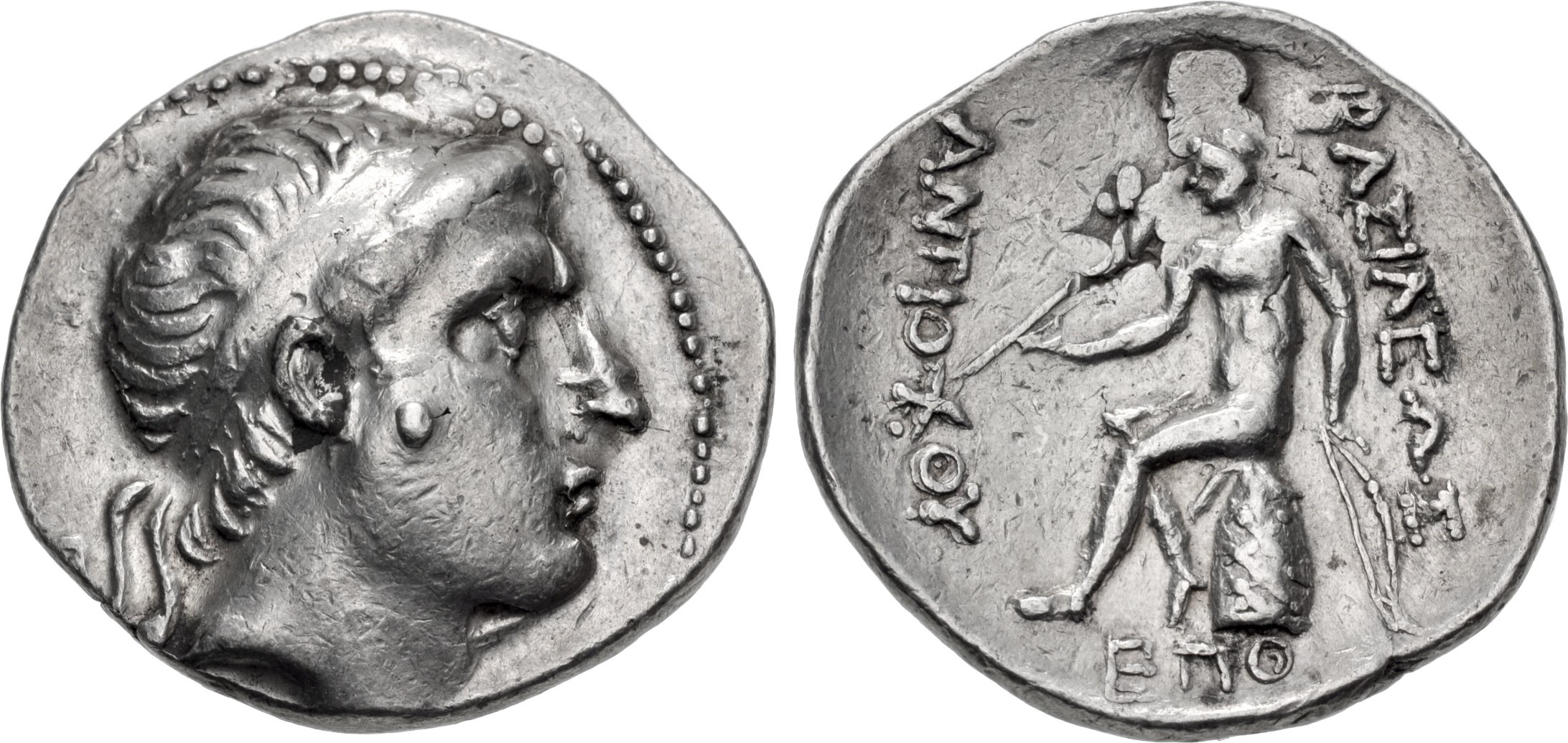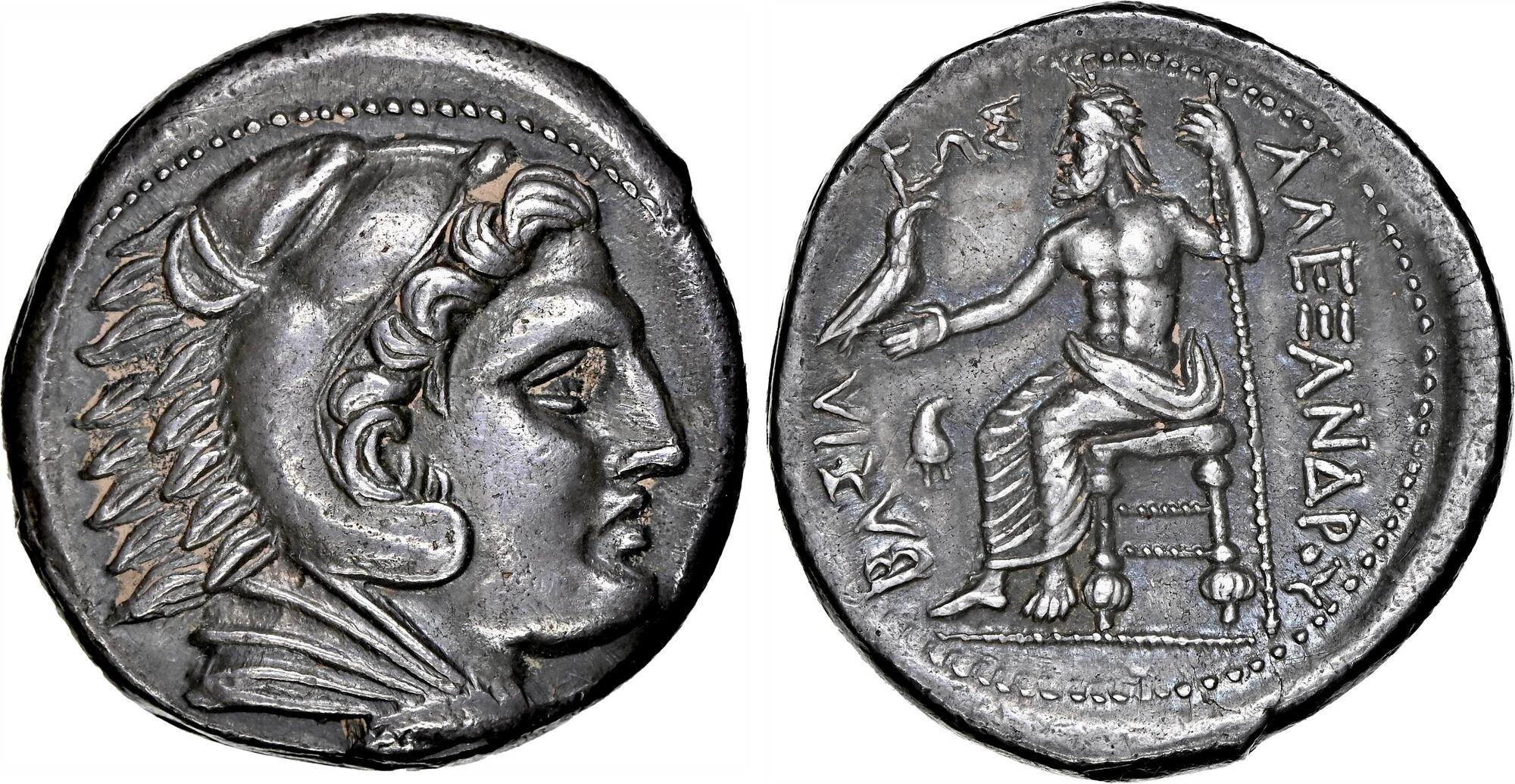242 BCE - 227 BCE | BAΣΙΛΕΩΣ ANTIOXOY
Overstriking coin
Antiochus Hierax Phrygia 2408.jpg
[1]
Overstruck variety
Alexander the Great on Alexander the Great - Leu, Web 18, 18 Dec. 2021, 573 overstruck variety.jpg
|
|
Sale(s)Sale(s) ᵖ:
|
Classical Numismatic Group, EA 540, 14 June 2023, 184.
|
|
|
|
Description
| ObverseInscription or printing placed on the obverse.:
|
Diademed head right
|
ReverseInscription or printing placed on the reverse.:
|
BAΣΙΛΕΩΣ ANTIOXOY (Greek) Apollo, testing arrow and resting hand on grounded bow, seated left on omphalos, EΠO in exergue
|
Mint and issuing power
Chronology
| FromIdentifies the initial date in a range assigned in a numismatic context. 242 BCE toIdentifies the final date in a range assigned in a numismatic context.. 227 BCE
|
Hellenistic 323-30 BC  periodTime period of the numismatic object. periodTime period of the numismatic object.
|
Physical description
MetalThe physical material (usually metal) from which an object is made.: Silver 
|
WeightWeight of the numismatic object (in grams). in grams: 16.6916.69 g <br />16,690 mg <br />
|
DenominationTerm indicating the value of a numismatic object. Examples: tetradrachm, chalkous, denarius.: tetradrachm 
|
AxisDescribes the directional relationship between the obverse and reverse of a numismatic object.: 1212 mm <br />1.2 cm <br />
|
| DiameterDescribes diameter of an object (in mm).: 3030 mm <br />3 cm <br />
|
StandardStandard.: Attic
|
References
Description
| ObverseInscription or printing placed on the obverse.:
|
Head of young Herakles r. wearing lionskin headdress
|
ReverseInscription or printing placed on the reverse.:
|
AΛEΞANΔPoY (Greek) Zeus seated l. holding eagle and scepter
|
Mint and issuing power
Chronology
| FromIdentifies the initial date in a range assigned in a numismatic context. 332 BCE toIdentifies the final date in a range assigned in a numismatic context.. 227 BCE
|
Hellenistic 323-30 BC  periodTime period of the numismatic object. periodTime period of the numismatic object.
|
Physical description
| DenominationTerm indicating the value of a numismatic object. Examples: tetradrachm, chalkous, denarius. ᵖ:
|
tetradrachm 
|
StandardStandard. ᵖ:
|
Attic
|
References
References
- ^ Houghton, Arthur - Lorber, Catharine (2002), Seleucid coins : a comprehensive catalogue. Part 1, Seleucus I through Antiochus III, New York - Lancaster - London, 2 v. (xxxviii, 488 p. + 300 p.), 101 pl.
- ^ Hoover, Oliver D. (2009), Handbook of ancient Syrian coins : royal and civic issues, fourth to first centuries BC, The Handbook of Greek Coinage 9, Lancaster, lxix, 332 p.


